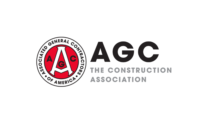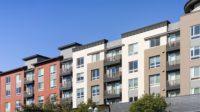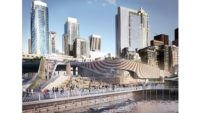There are a lot of factors that go into determining the success of your bid estimate but arguably one of the more difficult elements to predict in 2018 has been the cost of materials because it has been a moving target. And this year, it’s generally moved in one direction.
According to an Associated Builders and Contractors analysis of U.S. Bureau of Labor Statistics data, nonresidential construction input prices through July 2018 are up 9.6 percent year over year. The most significant driver of this increase has probably been a rise in softwood lumber prices which are up 19.5 percent from July 2017, while iron and steel prices are up 13.4 percent.
Unlike more typical market environments where the balance of supply and demand drives costs up or down, the 2018 landscape is a lot more complicated. The Trump administration has imposed a 20 percent tariff on imported Canadian lumber, which has exacerbated the impact of wildfire season and other supply-chain issues. The factors behind steel price increases are no simpler, with double-digit price hikes for scrap and iron ore in the last year but tariffs imposed by the current administration have also played an important role.
Breaking Down New Tariffs
It’s obvious that introducing new tariffs would greatly increase materials costs in the short term. The major question is whether or not the U.S. can ramp up production of those materials, like steel, aluminum, and softwood lumber, quickly and cheaply enough to bring the prices back down.
In the steel sector, the answer is a cautious “so far, so good.” As imports into the U.S. have declined by 10 percent since the beginning of the year (two million tons), domestic steel producers have steadily increased their output by more than 5 percent during the same period (two million tons).
More good news is the result of an SFIA-sponsored survey of contractors and suppliers that is reported in the SFIA 2Q 2018 Nonresidential Market Volume Report where respondents by and large are saying that, “The tariffs have not been that big of a deal.” Several observe that the tariffs were telegraphed well in advance of when they were applied, so distributors were able to buy significant inventories of material that is still making its way into the market. Labor, say many who were contacted, is more of an issue for them.
So What’s to Worry About?
It is still a fact that prices for steel coils purchased in the U.S. have gone up. However, imagine a scenario where a foreign manufacturer used cheap steel coils produced in a country to fabricate construction products in that same country. And what if those construction products could be shipped into the U.S. free of tariffs and duties?
In fact, this is exactly what has been happening. We have evidence that cold-formed steel products are being fabricated in China and shipped to California and Nevada for sale at below current market prices. This is possible because the U.S. Customs office has allowed the duty-free import of CFS products which ironically are manufactured from coils that would otherwise be subject to tariffs of 25 percent.
Cold-formed steel framing is not the only product to be affected by this tactic, but the practice has also been observed in products like structural steel, pressure vessels, automotive parts, and more. And there’s cause for concern that the idea may be catching on, as my office has recently received several inquiries from foreign entities.
In July, testimony to the Office of the U.S. Trade Representative, the Steel Framing Industry Association asked that this unfair circumvention be reined in by imposing duties on cold-formed steel framing that is manufactured in other countries and brought into the the country. This measure (which is due to be granted in an updated list of products slated for additional tariffs) has been granted by the USTR, which will effectively create a level playing field for CFS manufacturers.
Problem Solved? Not Quite
Building design is predicated on the premise that construction products used meet the minimum requirements of the building codes. Programs such as the SFIA Code Compliance Certification of cold-formed steel stud and track are specifically designed to provide contractors and suppliers with a third-party assurance that the materials they’re selling and installing meet these requirements. However, independent third-party tests find that not all the foreign fabricated cold-formed steel meet the minimum industry standards or building code requirements that ensure that buildings are safe for all occupants. Cold-formed steel framing is often used as a structural element in buildings up to 12 stories in height, so there are considerable risks from any product not meeting industry standards.
However, if there is any price advantage to non-U.S. fabricated steel, it’s no surprise that it would be a tempting alternative for contractors who feel the squeeze from rising material prices. And, of course, not all of these products fail to meet all of the minimum code requirements.
So, a word of caution to contractors in a turbulent year. No matter what you’re paying, make sure you know if the products you’re getting meet the minimum building code requirements. The easiest way, of course, is to buy a product that has a third-party certification that includes physical testing of the manufactured products. The SFIA Code Compliance Certification offers this 360-degree approach to code compliance. There are paper-based certifications out there that only verify the intent of the manufacture to produce product to specifications, and tests from independent third-party labs are an alternative way to find out if the material you’re buying is up to snuff.








